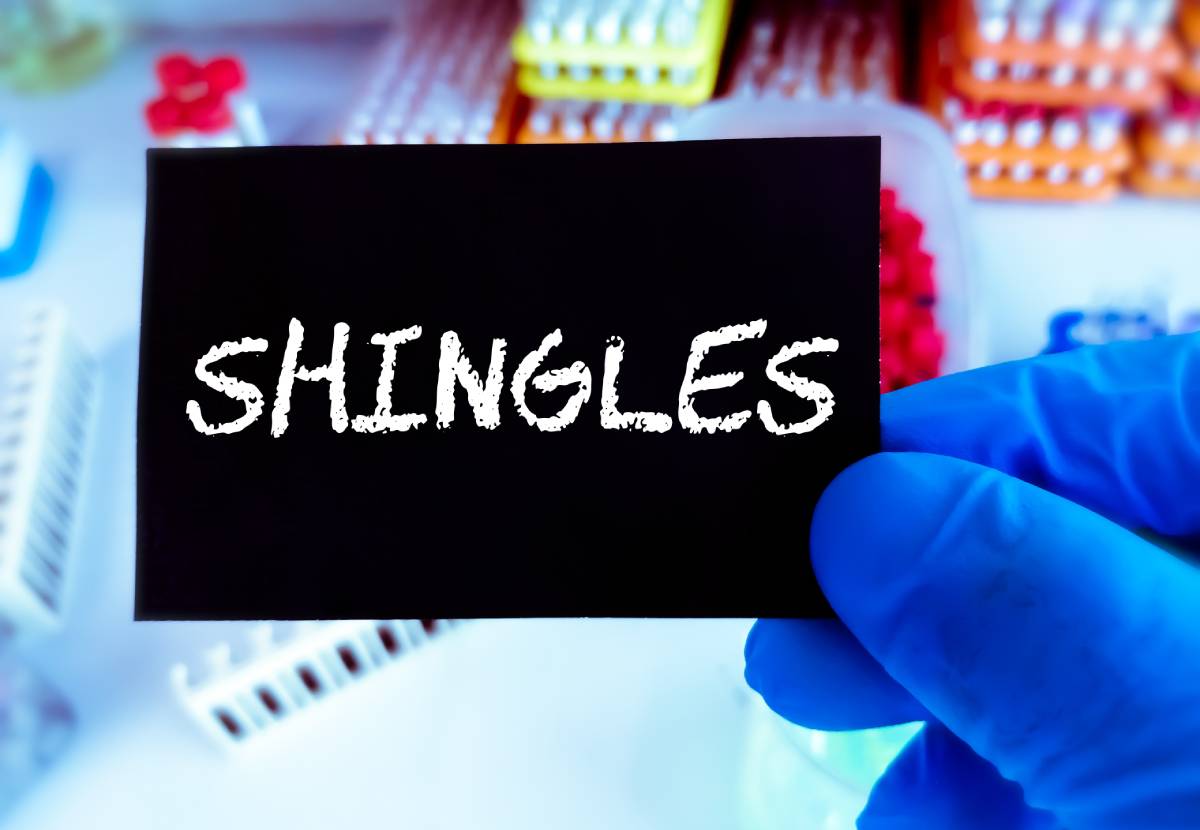Herpes zoster, commonly known as shingles, is a condition that can result from the reactivation of latent varicella zoster (chickenpox) virus after the initial infection and causes a painful and itchy rash, usually localized to one side of the body. While the rash caused by shingles itself typically scabs over in 7 to 10 days and then clears up in 2 to 4 weeks, the damage that this condition can wreak on the body can be much more severe. In some cases, particularly in patients who are immunocompromised, the rash can be widespread over the body, resembling a chickenpox rash, and a shingles rash that affects the face can cause vision loss.1 Furthermore, the most common complication of shingles is long-term neuralgia, or nerve pain, with around 10 to 18% of shingles patients experiencing postherpetic neuralgia (PHN).
Nerve pain most often affects people who have had shingles who are 40 years old or older, and the resulting pain can often debilitate the patient for years; the CDC shares a heartbreaking quote from a 63-year-old harpist whose career came to a halt because of his PHN: “Five years later, I still take prescription medication for pain. My shingles rash quickly developed into open, oozing sores that in only a few days required me to be hospitalized. I could not eat, sleep, or perform even the most minor tasks. It was totally debilitating. The pain still limits my activity levels to this day.”2 It is clear that an awareness of this potential complication of varicella zoster and herpes zoster is absolutely critical for physicians, particularly those tending to an older adult patient population, to properly address the risk of or a case of shingles in any patient.
A 2018 report in The Journal of Pain provides a summary of the mechanism of pain and itch caused by shingles. Noting that skin biopsy studies, which correlated PHN in shingles patients with the severity of nerve damage (specifically persistent distal nociceptive axon loss) and correlated pain persistence with damage at the spinal cord level (segmental atrophy of the spinal cord dorsal horn), demonstrated the importance of the central nervous system response to nerve injury. The report put forward the idea that PHN is likely caused by unprovoked firing of the peripheral and/or central neurons that mediate itch, which can cause shingles patients to provoke painless injuries by scratching because such firing would also be occurring in areas left severely deafferented from shingles (i.e. left feeling “numb”).3 In other words, abnormal nerve activity can generate itchiness, and if the area has nerve damage that reduces or removes sensation, the patient may then cause themselves harm through scratching.
An earlier (2001) report in Geriatrics had identified that combination therapy, comprising of various antiviral, antidepressant, corticosteroid, opioid, and topical agents, should be applied as soon as possible after the onset of pain in cases of PHN in shingles to provide the most effective pain relief and management.4 Since then, further studies of this condition and the management of its symptoms have identified that, because each shingles patient will experience different and differently localized symptoms and respond differently to various treatment, physicians and other treatment providers for patients with PHN in shingles must tailor treatment plans to each individual patient.5
Because of the chronic nature of the nerve pain caused by this condition, it has also been noted that properly informing patients on the appropriate dosage and titration of their medications as well as the importance of adherence to the treatment plan is crucial to managing patient expectations and ensuring that patient suffering and debilitation are minimized. For these reasons, in assisting patients with nerve pain due to shingles, properly training nurses and primary care providers, who are able to establish communication with the patient and their family members as well as encourage patients to initiate appropriate pain-relieving procedures and medications, is of particular importance.6
References
(1) Signs and Symptoms of Shingles (Herpes Zoster) | CDC. https://www.cdc.gov/shingles/about/symptoms.html.
(2) Complications of Shingles (Herpes Zoster) | CDC. https://www.cdc.gov/shingles/about/complications.html.
(3) Oaklander, A. L. Mechanisms of Pain and Itch Caused by Herpes Zoster (Shingles). The Journal of Pain 2008, 9 (1), 10–18. https://doi.org/10.1016/j.jpain.2007.10.003.
(4) Bajwa, Z. H.; Ho, C. C. Herpetic Neuralgia. Use of Combination Therapy for Pain Relief in Acute and Chronic Herpes Zoster. Geriatrics 2001, 56 (12), 18–24.
(5) Hadley, G. R.; Gayle, J. A.; Ripoll, J.; Jones, M. R.; Argoff, C. E.; Kaye, R. J.; Kaye, A. D. Post-Herpetic Neuralgia: A Review. Curr Pain Headache Rep 2016, 20 (3), 17. https://doi.org/10.1007/s11916-016-0548-x.
(6) Mallick-Searle, T.; Snodgrass, B.; Brant, J. Postherpetic Neuralgia: Epidemiology, Pathophysiology, and Pain Management Pharmacology. JMDH 2016, Volume 9, 447–454. https://doi.org/10.2147/JMDH.S106340.
